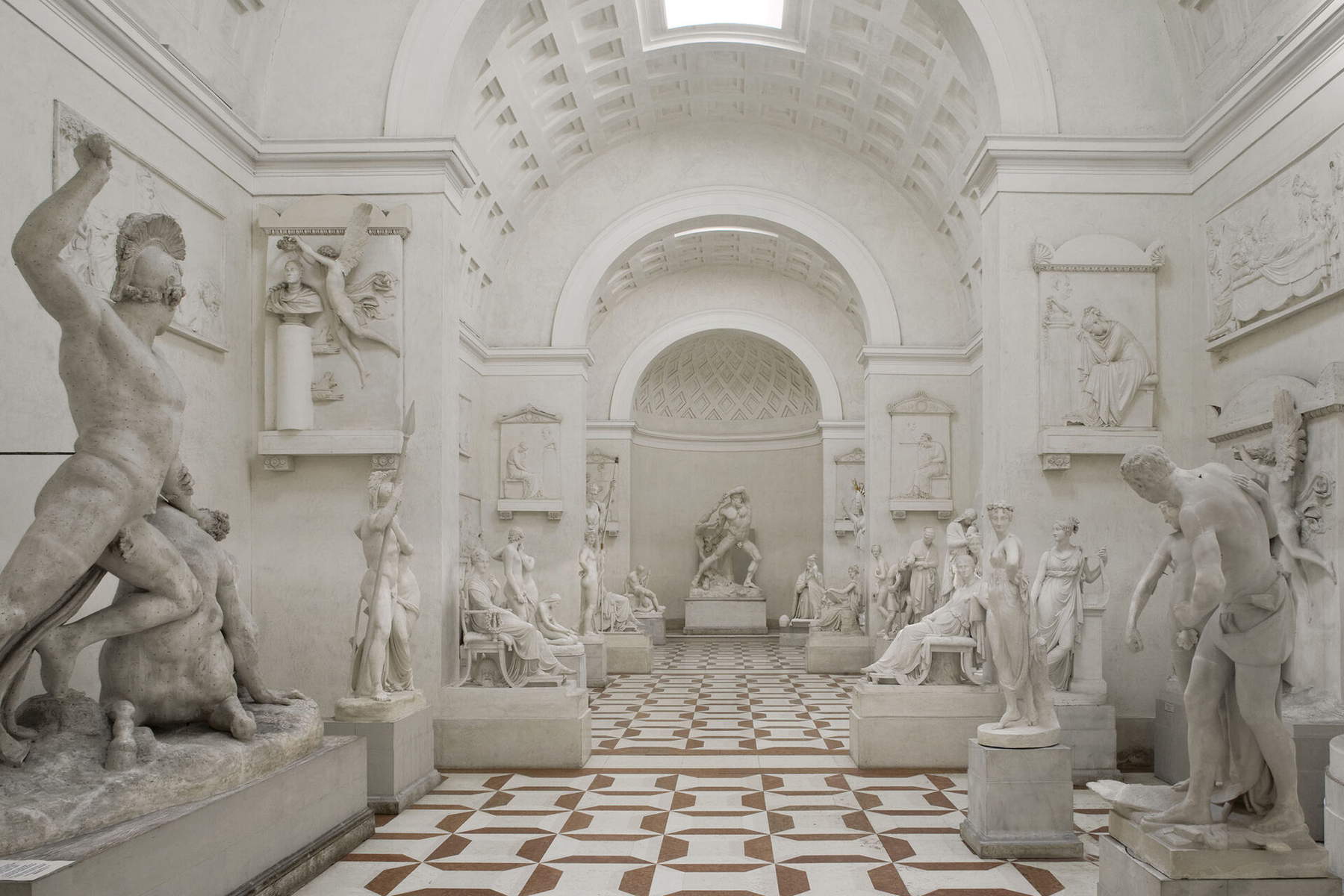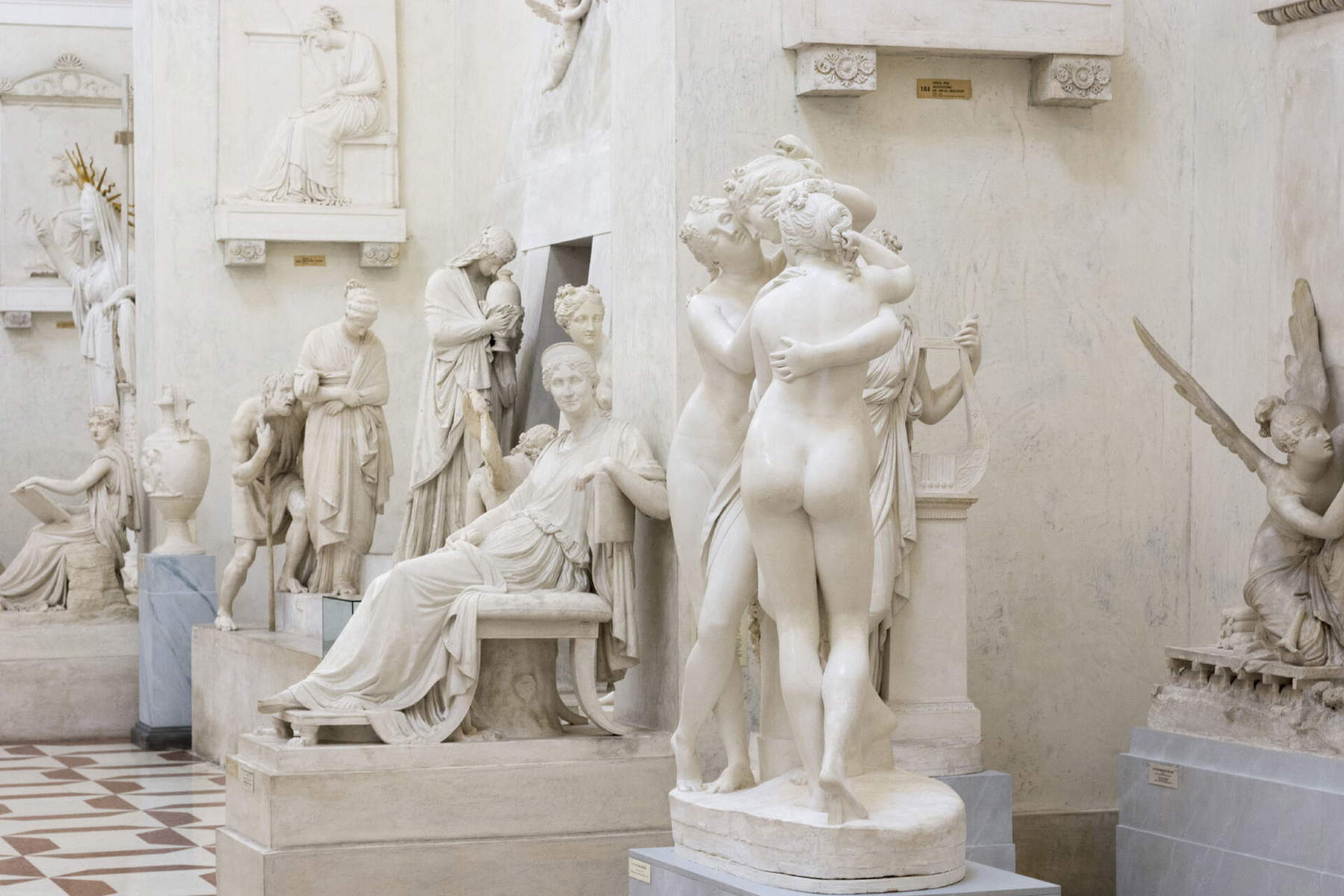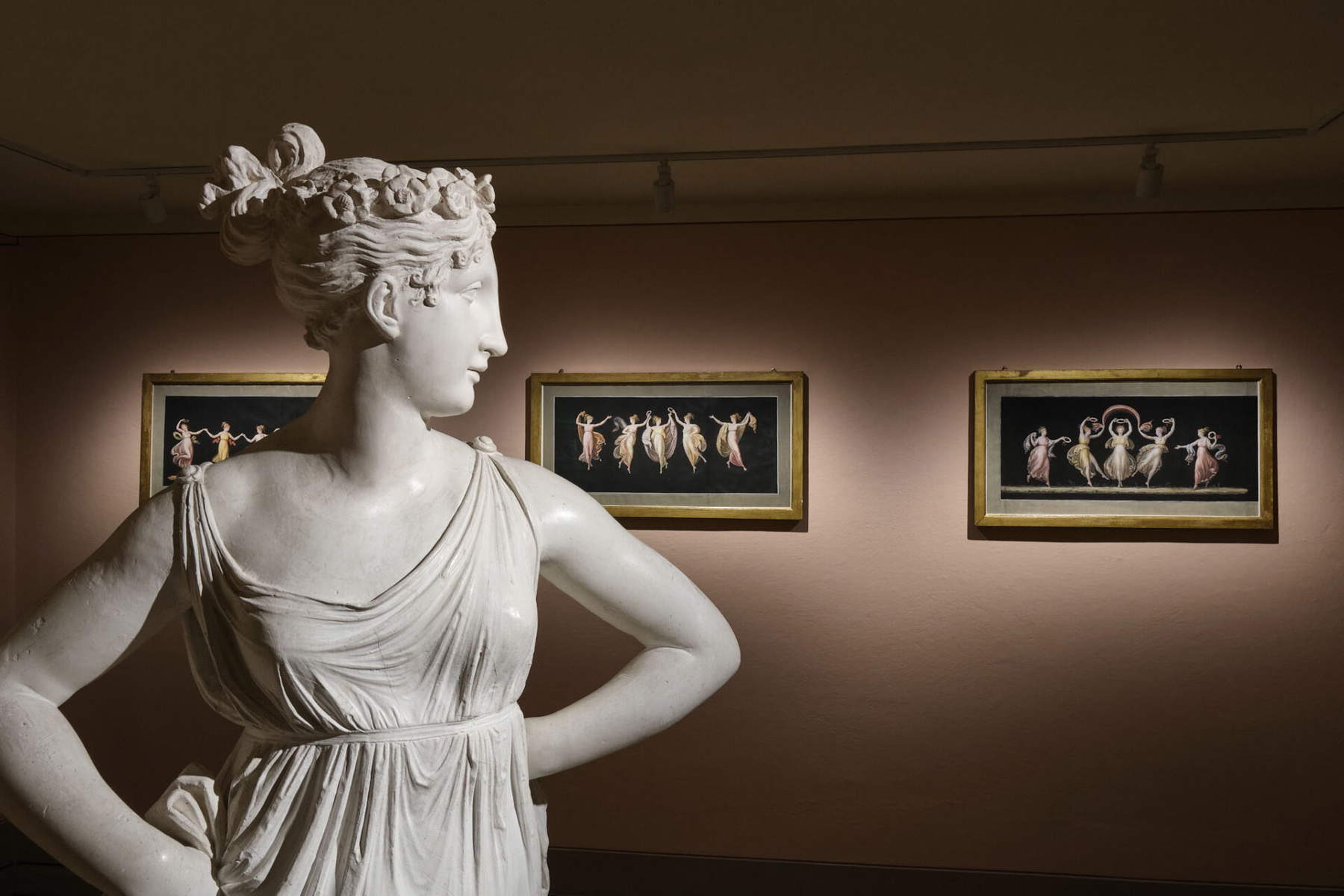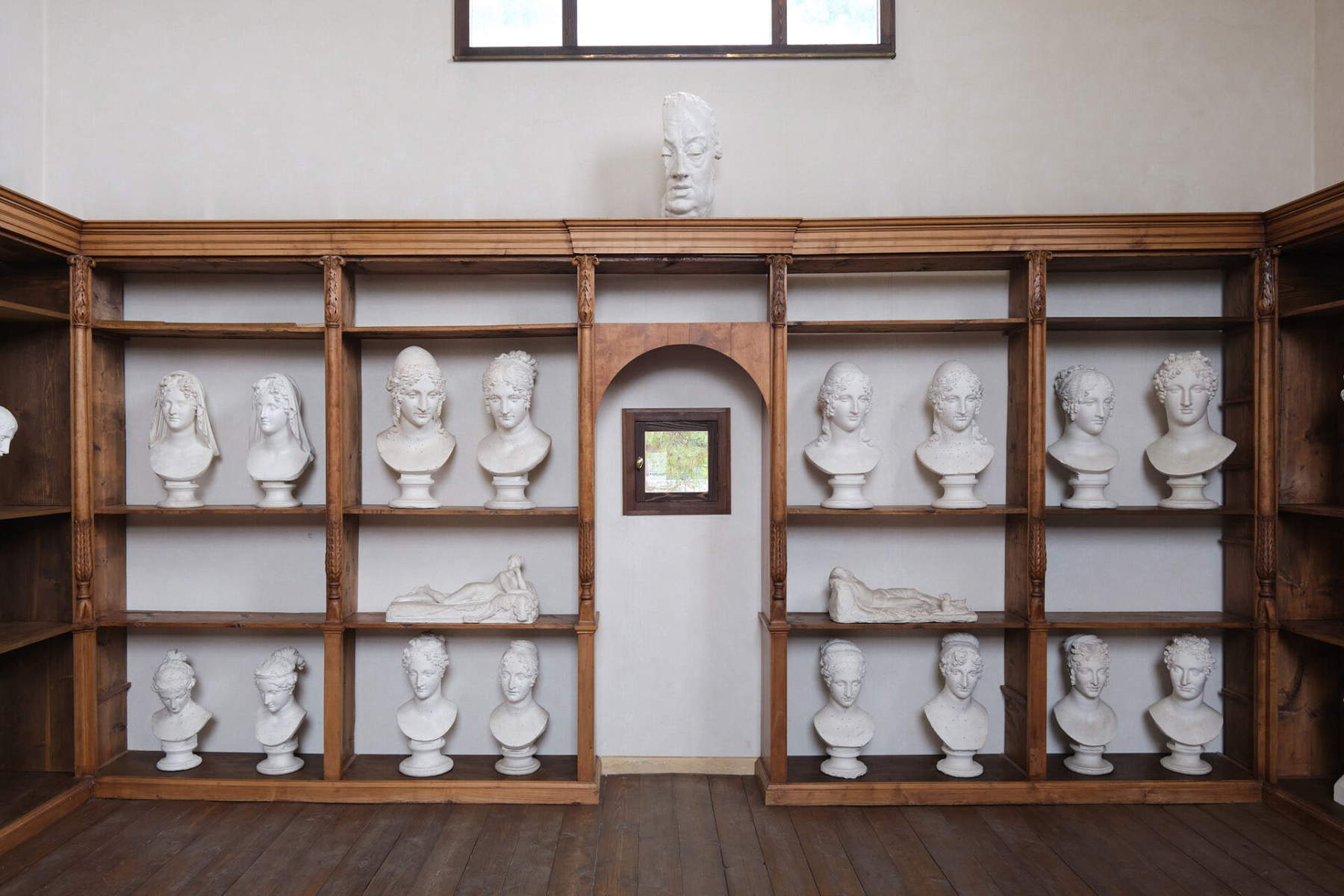In Possagno, starting Sunday, December 1, 2024, visitors will once again be able to explore the entire Antonio Canova Gypsotheca Museum: in fact, the19th-century wing reopens in its entirety, returned after seven years of closure for restoration work. The return to full functionality of the structure represents an important cultural event for art enthusiasts and admirers of the genius of Antonio Canova (Possagno, 1757 - Venice, 1822), a world-famous sculptor originally from Possagno.
During the period of closure, many works had been temporarily relocated to allow for the necessary structural consolidation and seismic improvement work, but now the entire Canova collection is once again on display. The Municipality of Possagno promoted these interventions with the support of the Museum and thanks to funding from the Culture Fund established by the Ministry of Culture. The work involved, in particular, the second and third bays of the 19th-century wing, designed by architect Francesco Lazzari between 1831 and 1836. This restoration represents a milestone in the preservation of the Gypsotheca’s architectural and artistic heritage.
“Canova wanted to leave an immense treasure to his fellow citizens, to the people of Possagno, as evidence of the deep bond that existed, and still exists, between the master and his hometown,” says Valerio Favero, mayor of Possagno. “An indissoluble feeling, which fills each of us with pride. However, it imposes on us the responsibility of handing down and preserving the enormous legacy he received. For this reason, as an Administration, we strongly wanted and supported this intervention, which completes what has already been done in 2018 in the atrium and in the first span of the Lazzari Wing, and which finally returns it to us now, completely safe from a seismic point of view to protect the works and the thousands of visitors who every year choose to immerse themselves in the beauty of the Canova art kept in our museum. A small tangible gesture of gratitude, on the part of the Possagno community, to those who have given it so much. After seven years, we will have the privilege of being able to see the entire monumental wing back to its splendor, and I am sure that, as every time you enter it, it will make your breath take away, such is the Beauty and so many are the masterpieces housed in it.”
“It is a great pleasure,” says Massimo Zanetti, president of Fondazione Canova ONLUS, “to present the reopening of the 19th-century Gallery as the new president of the Foundation. I am convinced that the works of our great master will have new luster to welcome the many admirers of his work.”
“The reopening of the Nineteenth-Century Wing of the Gypsotheca represents a major event, not only for the Canova Museum, but for the entire Italian cultural scene,” emphasizes Moira Mascotto, director of the Museum. “After seven years, the public will finally be able to return to contemplate the exhibition in its entirety, enriched by the relocation of the bas-reliefs to their original location, from which they were removed during the 2018 restoration. This intervention is emblematic of our institution’s commitment to the conservation and enhancement of neoclassical art, returning a priceless heritage to the community. The inauguration marks a significant milestone in our ongoing journey to protect and promote Canova’s immortal legacy.”


A highlight of the reopening is the new lighting system installed inside the Nineteenth-century Wing. The renewed lighting system was designed to enhance the details of the original plaster models, later reproduced in marble by Canova himself and preserved in the world’s most important museums. The attention paid to the light rendering of the sculptures allows visitors to fully grasp the artist’s mastery, highlighting the plays of light and shadow that characterize his works, with their delicate and deeply expressive features.
The restoration and reopening of the Nineteenth-Century Wing is part of a larger project that has also seen the Gypsotheca Antonio Canova Museum engaged in recent years in a major digitization of the entire complex. Thanks to advanced technologies, it has been possible to create a digital reproduction of the entire Canova artistic heritage. This initiative enriches the visitor experience with a new virtual tour that allows visitors to remotely explore each section of the museum, offering a comprehensive view of the collections and architecture of the site.


The Gypsotheca Canova Museum now presents itself to the public in its entirety, integrating several sections of great interest: the Birthplace of Antonio Canova, which preserves paintings, drawings, engravings and the artist’s personal effects; the Gypsotheca, the largest in Europe, located inside an enlarged basilica designed by architect Carlo Scarpa; theGemin Wing, the library and the vast park with garden. During the restoration work, the museum still maintained accessibility to the other areas: the Birth House and the Scarpa Wing, which houses, in a scenographic setting designed by Carlo Scarpa, Canova’s clay sketches and sculptures, illuminated by natural light that enhances the whiteness of the plaster casts.
One of the major masterpieces on display in the renovated 19th-century wing is the plaster statue of Napoleon as Mars the Peacemaker (1806). Over three meters tall, this imposing sculpture depicts Napoleon Bonaparte in the guise of Mars, the god of war, while holding a spear in his left hand and the globe surmounted by the goddess Nike in his right. This work, in addition to expressing Canova’s virtuosity in the rendering of anatomical and symbolic details, is an ideal tribute to Napoleon, depicted here as a bringer of peace.
Another work of extraordinary interest is Hercules and Lica (1795-1796), considered the first of Canova’s monumental statues. In this sculpture, the marble (now on display at the National Gallery of Modern Art in Rome) is rendered with a drama that communicates emotional and physical tension. In the scene, Hercules’ body tenses in an aggressive gesture as he lifts Lica, who desperately tries to escape. The latter’s contorted face, captured with extreme expressive intensity, reveals the young man’s pain and fear, forcefully held back by the mythological hero.
Other masterpieces for the public to admire include the celebrated Graces (1813), commissioned by Josephine Beauharnais and reproduced for the Duke of Bedford, John Russel. The Graces sculpture is now divided between the Victoria & Albert Museum in London and the National Galleries of Scotland in Edinburgh, while the Hermitage in St. Petersburg houses another version. Finally, there is no shortage of Amore e Psiche (1800), a symbol of eternal and thwarted love, depicted in the moment of reconciliation of the two mythological lovers. This famous sculpture depicts the union between the god Love and the mortal Psyche, a scene emblematic of neoclassical romanticism, symbolizing the overcoming of adversity.
 |
| The entire 19th-century wing of the Gypsotheca Canova Museum reopens: full tour returns after seven years |
Warning: the translation into English of the original Italian article was created using automatic tools. We undertake to review all articles, but we do not guarantee the total absence of inaccuracies in the translation due to the program. You can find the original by clicking on the ITA button. If you find any mistake,please contact us.